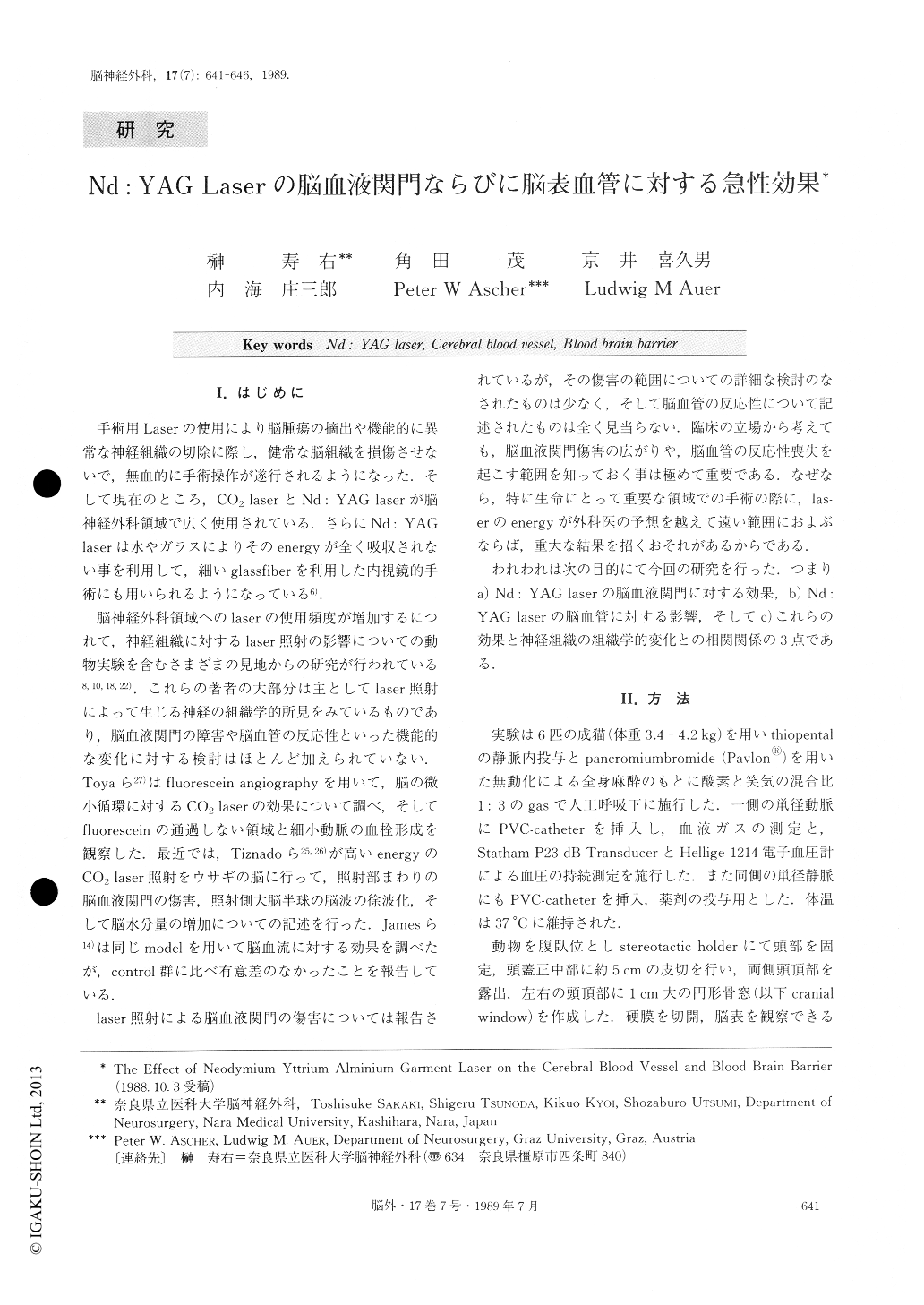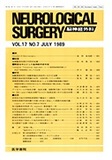Japanese
English
- 有料閲覧
- Abstract 文献概要
- 1ページ目 Look Inside
I.はじめに
手術用Laserの使用により脳腫瘍の摘出や機能的に異常な神経組織の切除に際し,健常な脳組織を損傷させないで,無血的に手術操作が遂行されるようになった.そして現在のところ,CO2 laserとNd:YAG laserが脳神経外科領域で広く使用されている.さらにNd:YAG laserは水やガラスによりそのenergyが全く吸収されない事を利用して,細いglassfiberを利用した内視鏡的手術にも用いられるようになっている6).
脳神経外科領域へのlaserの使用頻度が増加するにつれて,神経組織に対するlaser照射の影響についての動物実験を含むさまざまの見地からの研究が行われている8,10,18,22).これらの著者の大部分は主としてlaser照射によって生じる神経の組織学的所見をみているものであり,脳血液関門の障害や脳血管の反応性といった機能的な変化に対する検討はほとんど加えられていない.Toyaら27)はfluorescein angiographyを用いて,脳の微小循環に対するCO2laserの効果について調べ,そしてfluoresceinの通過しない領域と細小動脈の血栓形成を観察した.最近では,Tiznadoら25,26)が高いenergyのCO2laser照射をウサギの脳に行って,照射部まわりの脳血液関門の傷害,照射側大脳半球の脳波の徐波化,そして脳水分量の増加についての記述を行った.
The effect of the laser energy to the cerebral vascular reactivity and the blood brain barrier.
A Nd : YAG laser with 20 watt impacts of 0.5, 1.0, 2.5 and 5.0 seconds duration time were irradiated through the cranial window made at the parietal regions of anesthetized adult cats. The disruption of the blood brain barrier was examined by checking the degree of the extravasation of Evans blue dye administrated in the vein. The cortical vessel reactivity was observed through the cranial window and evaluated using an intravital microscope and a videoangiometer.

Copyright © 1989, Igaku-Shoin Ltd. All rights reserved.


